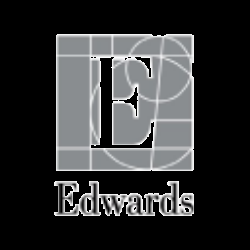Overall, Edwards is positioned well with a strong business foundation and diverse product offerings. Future growth prospects appear promising, driven by innovation and expansion into underpenetrated markets, though there are regional pressures and regulatory uncertainties that could impact performance.
Analysis Date: February 11, 2025
Last Updated: March 12, 2025
Trailing Twelve Months (TTM) values provide a view of the company's performance over the last year.
Graham Value Metrics
Benjamin Graham's value investing approach focuses on finding stocks with a significant margin of safety between their intrinsic value and market price.
Intrinsic Value
Estimated fair value based on Graham's formula
$272.50
Current Market Price: $68.88
IV/P Ratio: 3.96x (>1.0 indicates undervalued)
Margin of Safety
Gap between intrinsic value and market price
75.0%
Graham recommended a minimum of 20-30% margin of safety
Higher values indicate a greater potential discount to fair value
ROE: 48.96992020364054
ROA: 2.9535897298415206
Gross Profit Margin: 78.3886239365512
Net Profit Margin: 72.92769421588666
Trailing Twelve Months (TTM) values provide a view of the company's performance over the last year.
Strong Net Profit Margin
The net profit margin of 72.93% indicates high profitability, suggesting that the company retains a significant portion of revenue as profit.
High Return on Equity
With a return on equity of 48.97%, the company effectively generates high returns for its shareholders.
Operating Profit Margin
26.37
Operating Profit Margin
The operating profit margin of 26.37% is respectable but indicates that a significant portion of revenue is consumed by operating costs.
About Profitability Metrics
Profitability metrics measure a company's ability to generate earnings relative to its revenue, operating costs, and other relevant metrics. Higher values generally indicate better performance.
Return on Equity (ROE)
Measures how efficiently a company uses its equity to generate profits
48.97%
10%
15%
Higher values indicate better returns for shareholders
TTM (as of 2025-04-16)
Return on Assets (ROA)
Measures how efficiently a company uses its assets to generate profits
2.95%
3%
7%
Higher values indicate better asset utilization
TTM (as of 2025-04-16)
Gross Profit Margin
Percentage of revenue retained after accounting for cost of goods sold
78.39%
20%
40%
Higher values indicate better efficiency in production
TTM (as of 2025-04-16)
Net Profit Margin
Percentage of revenue retained after accounting for all expenses
72.93%
8%
15%
Higher values indicate better overall profitability
TTM (as of 2025-04-16)
Low Debt Levels
0.07
Debt-to-Equity Ratio
A debt-to-equity ratio of 0.07 indicates very low financial leverage, suggesting the company is less risky and has a solid capital structure.
Strong Liquidity Ratios
The current ratio of 4.18 and quick ratio of 3.45 indicate that the company has ample liquidity to cover its short-term obligations.
Interest Coverage Ratio
0.0
Interest Coverage Ratio
An interest coverage ratio of 0.0 suggests that the company may not be generating enough earnings to cover its interest obligations, raising concerns about financial stability.
About Financial Health Metrics
Financial health metrics assess a company's ability to meet its financial obligations and its overall financial stability.
Debt to Equity Ratio
Total debt divided by total equity
0.07x
1.0x
2.0x
Lower values indicate less financial leverage and risk
Less than 1.0 is conservative, 1.0-2.0 is moderate, >2.0 indicates high risk
Q4 2024
Current Ratio
Current assets divided by current liabilities
4.18x
1.0x
2.0x
Higher values indicate better short-term liquidity
Less than 1.0 is concerning, 1.0-2.0 is adequate, greater than 2.0 is good
Q4 2024


